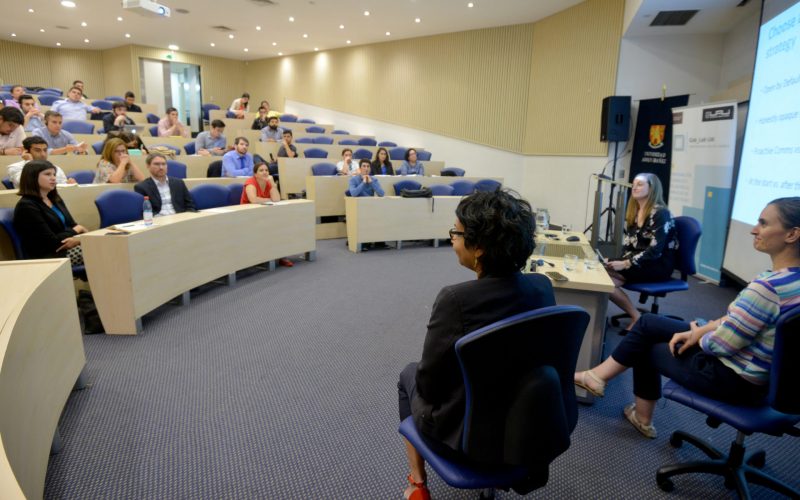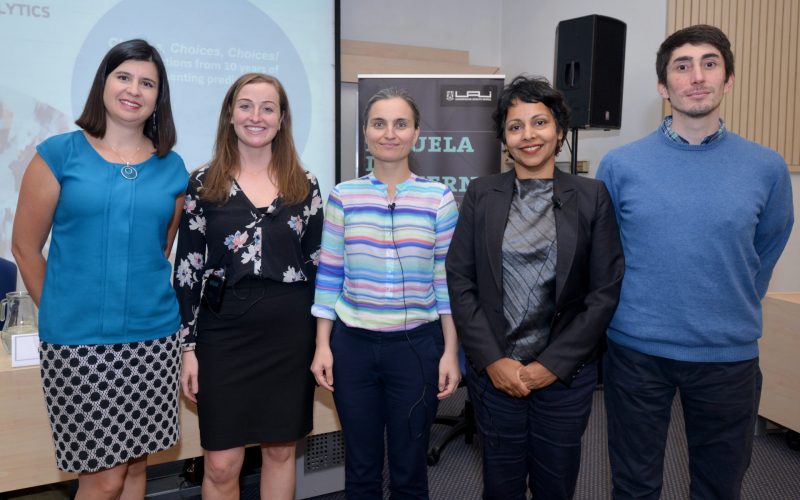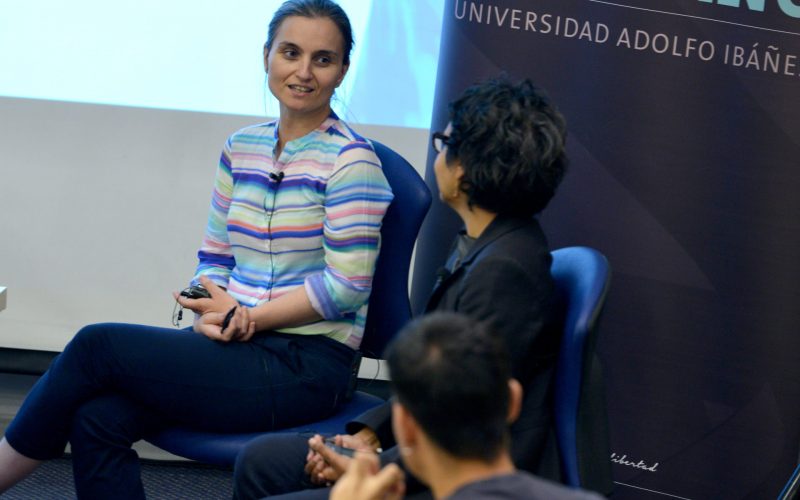How to bring research to reality ?, is the answer that Rhema Vaithianathan, Director of the Center for Social Data Analysis of the Technological University of Auckland.
From theory to practice: Tips for implementing algorithms in the public sector
August 5, 2019
*Gallery: GobLab UAI, held an event with the team of the Center for Social Data Analytics of the Auckland University of Technology.
How to bring the research to reality ?, is the answer that Rhema Vaithianathan, Director of the Center for Social Data Analysis of the Technological University of Auckland, along with Emily Kulick, Project Manager of the USA. UU., And Katerina Taskova, senior data scientist, they responded during the conversation conducted by the GobLab, public innovation laboratory of the UAI School of Government.
For María Paz Hermosilla, Director of the public innovation laboratory (GobLab) of the School of Government, the implementation requires understanding the temporality of the data, the news, the quality and the nature of the decisions and processes: “There are several problems to have in taking into account in a model created in a research database and put it into operation so that it can be used by public policy makers or frontline workers without losing their performance.”
During the activity, the Director of the Center for Social Data Analysis of the Technological University of Auckland, presented her main reflections and lessons learned from her ten years implementing predictive risk models in various parts of the world.
Here his main conclusions:
Poor distribution of the budget: many times the majority of the investment goes to the design, so the specialist suggests that only 30% go to this stage. 40% should be for implementation, 20% for maintenance (over a period of 5 years) and 10% for re-design. “This can be generated because these systems with algorithms are confused with electronic government platforms, where a large amount of budget can be spent on their design, since they are not as dynamic as the risk estimation algorithms, where after two or three years is likely to require updating, ”says Hermosilla
Communicate the algorithms: when it comes to explaining the implementation of an algorithm, especially in social development issues, it generates greater acceptance to emphasize the improvements in the quality of life and not the saving of silver that will involve. “The communication of the project when done from the logic of savings has generated a lot of resistance,” confirms the director of GobLab.
Always a human being: this type of project is always more accepted when supporting the decision-making process in a person, not when it is replaced by a machine. “It is complex to leave sensitive decisions on social issues only in the hands of a computer,” says the academic UAI.
Transparency: The backend must be designed to be flexible, transparent and allow quality assurance. “It is necessary to incorporate a constant audit: errors occur, data flows sometimes vary by a change in public policy, and we must have a monitoring, if not any modification can affect the performance of the algorithm,” says Hermosilla, who is also consulting fellow of The Governance Lab in New York.
Treat the algorithm as if it were an employee: not because it is a software is not going to be monitored, since the data that is injected sometimes changes. “It has to be seen if what was created is the same thing that is operating, you have to check the components that are entering and that can affect the quality of the information,” explains the UAI Big Data expert.
Simplicity: when an algorithm is chosen among several techniques, simplicity is a good criterion. “It makes it easier to understand and therefore if there is any change, it will be easier to repair. We should not rely solely on performance metrics but also consider simplicity when choosing predictive risk models,” concludes the director of GobLab.









